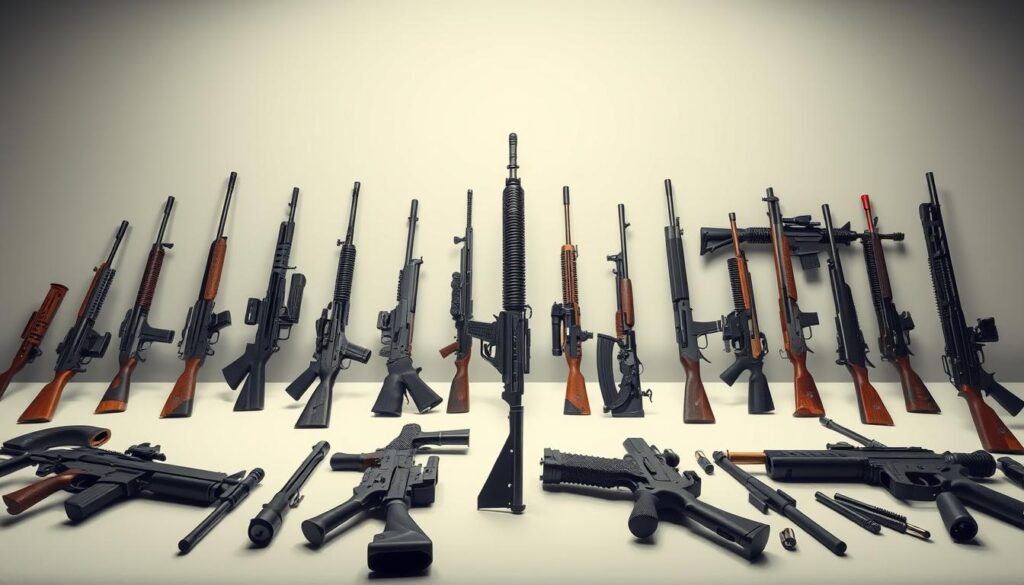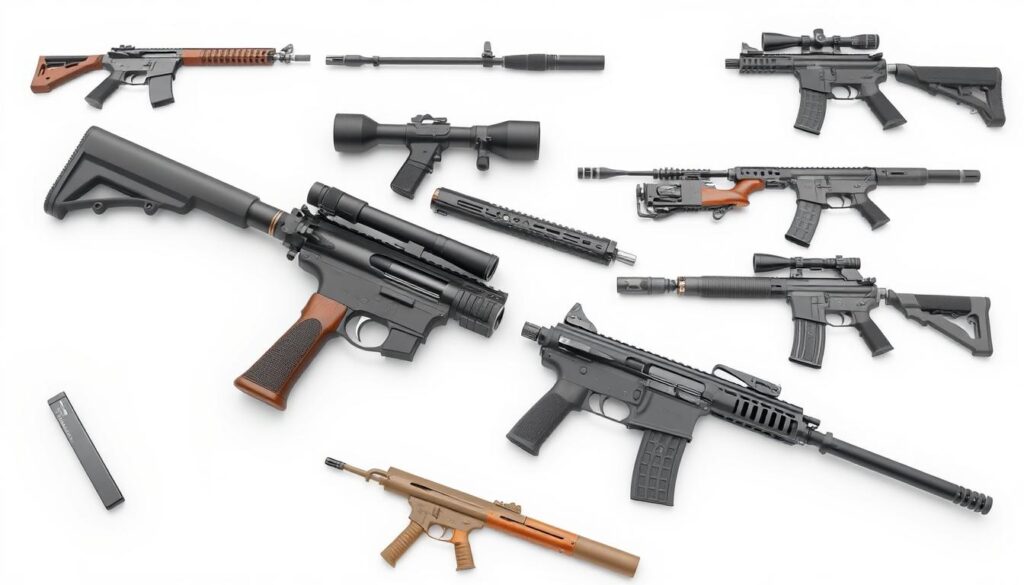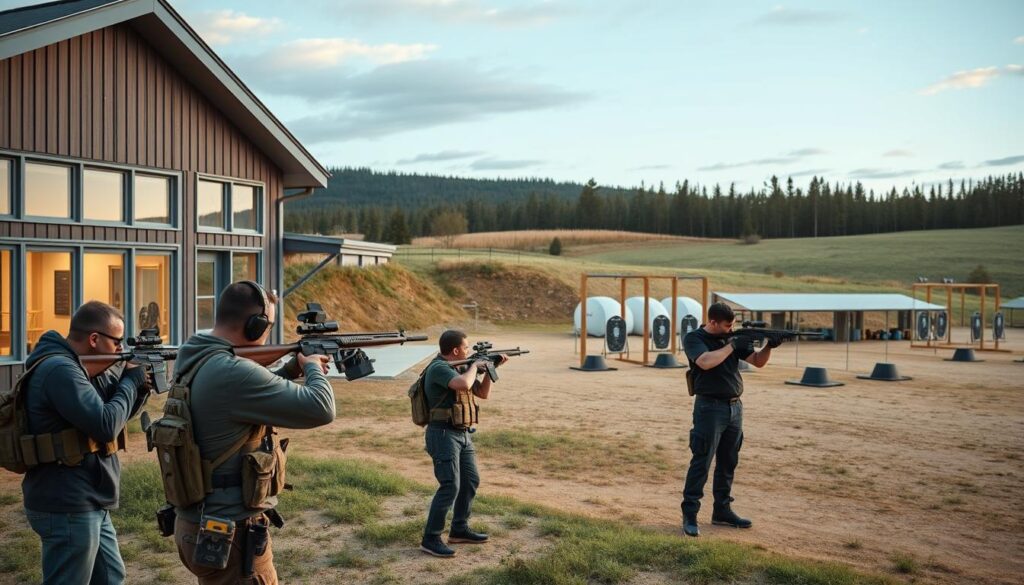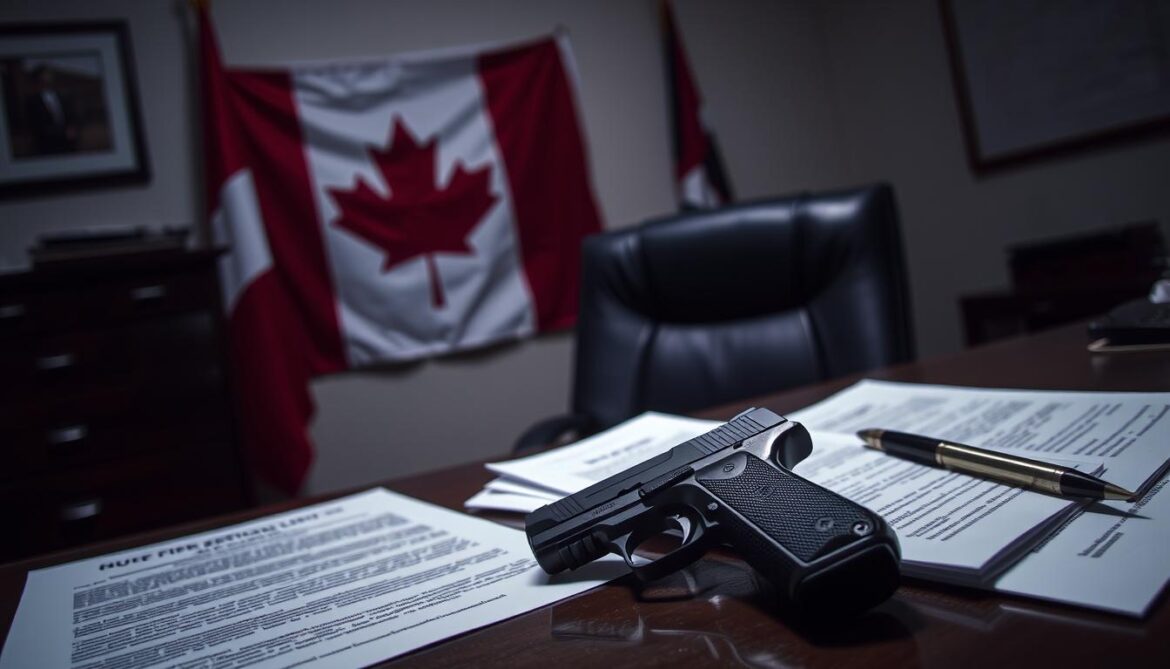Canada’s firearm ownership rate sits at 34.7 per 100 residents, yet strict regulations ensure 99.97% of licensed gun owners have never committed homicide with a firearm. This statistic highlights the precision of a system designed to prioritize public safety while respecting lawful use. Understanding these rules isn’t just about compliance—it’s about navigating a carefully structured framework that impacts millions.
Public Safety Canada oversees a three-tier classification system for firearms: non-restricted, restricted, and prohibited. Each category dictates ownership requirements, storage protocols, and usage permissions. Through partnerships with law enforcement and community stakeholders, policies evolve to address emerging challenges like organized crime while preserving hunting and sport-shooting traditions.
Did you know federal legislation undergoes regular reviews? Public consultations shape updates to the Firearms Act, ensuring regulations reflect both urban safety concerns and rural realities. This dynamic approach balances constitutional rights with collective security needs.
Your journey through Canadian firearms laws starts here. Discover how licensing processes, transport rules, and storage standards intersect with crime prevention strategies. Learn why specific models fall into restricted categories and how evolving policies affect your responsibilities as an owner.
Understanding Canadian Firearms Laws
Canadian firearm regulations are built on precise definitions and classifications. These rules form a layered system designed to balance individual rights with collective security. At its core lies the Criminal Code, which outlines prohibited actions and devices with exacting detail.

Overview of Firearms Legislation in Canada
The Firearms Act and Criminal Code work together to govern ownership. Semi-automatic models receive special attention – legally defined as those automatically completing part of the reloading cycle after firing. This technical specificity helps prevent misuse while allowing permitted activities.
Three main categories structure compliance:
| Category | Definition | Crime Prevention Role |
|---|---|---|
| Non-Restricted | Common hunting/sporting arms | Standard licensing checks |
| Restricted | Specific handguns/semi-automatics | Enhanced storage/transport rules |
| Prohibited | Firearms in Criminal Code Schedule | Complete ownership ban |
Key Legal Concepts and Definitions
Part 1 of the Criminal Code’s schedule lists prohibited models, including converted automatics and certain barrel lengths. The Canadian Firearms Program cross-references this list during license verification. Law enforcement agencies use these classifications daily when inspecting ownership documents.
You’ll encounter terms like “action type” and “magazine capacity” when reviewing regulations. These determine whether a firearm requires special permits. Always consult official resources – minor design differences can change legal status dramatically.
Categorising Firearms in Canada
Navigating Canada’s firearm categories requires precision. Each classification carries distinct rules affecting ownership rights and crime prevention strategies. Let’s break down how measurements and technical specs shape these divisions.

Breaking Down the Three-Tier System
Non-restricted firearms form the foundation for hunters and sport shooters. These include bolt-action rifles exceeding 660mm in length and most standard shotguns. A .308-caliber hunting rifle used for moose season typically falls here.
Restricted firearms demand extra vigilance. This category covers many semi-automatic models and handguns designed for target shooting. Transporting these requires an Authorization to Carry permit – even between your home and shooting range.
| Category | Examples | Key Rules |
|---|---|---|
| Non-Restricted | Bolt-action rifles, pump shotguns | No transport permits needed |
| Restricted | Target pistols, AR-15 variants | Trigger locks during storage |
| Prohibited | Fully automatic weapons, sawed-off shotguns | Grandfathered licenses only |
How Regulations Evolve
The government uses Orders-in-Council to update classifications. A rifle legal today might become restricted tomorrow based on new crime data. In 2020, over 1,500 models were reclassified through this process.
Barrel length proves critical. A shotgun with a 400mm barrel stays non-restricted, but cutting it to 350mm moves it to prohibited status. Always verify measurements before modifying any firearm.
Detailed Look at “what guns are legal in canada list”
Staying compliant requires understanding how dynamic prohibitions reshape permitted models. Recent updates demonstrate how technical specifications trigger reclassifications, directly impacting ownership rights.

Interactive Guide to Current Classifications
Two major updates transformed legal ownership parameters:
- May 2020: 1,500+ assault-style models banned, including critical components like M16/AR-15 upper receivers
- December 2024: 324 additional prohibited models announced through Order-in-Council
These changes mean a rifle purchased legally in 2019 might now require immediate surrender. Always cross-reference the Firearms Reference Table before acquiring any model.
Practical Compliance Strategies
Three steps ensure you adapt to evolving regulations:
- Bookmark the RCMP’s weekly updated prohibited firearms list
- Verify exact model numbers against government databases
- Subscribe to provincial firearms officer email alerts
For example, slight variations in barrel threading or magazine capacity can shift a firearm from restricted to prohibited status overnight. Law enforcement agencies emphasize these details during license verifications and inspections.
Regularly reviewing official resources helps prevent accidental non-compliance. This proactive approach aligns with national crime prevention goals while preserving lawful use opportunities for sport and hunting.
Understanding Semi-Automatic Firearms in Canada
Semi-automatic mechanisms dominate modern shooting sports but face strict technical thresholds. These firearms cycle rounds automatically but require manual trigger pulls—a design balancing efficiency with control. Let’s explore how regulators distinguish lawful models from prohibited variants.
Legal Criteria for Semi-Automatic Weapons
Three critical measurements determine classification:
- Barrel length: Centrefire models need ≥470mm barrels for non-restricted status
- Muzzle energy: Exceeding 10,000 Joules moves firearms to prohibited status
- Bore diameter: 20mm or wider triggers automatic bans
A hunting rifle meeting all three stays legal. Modify one specification, and its status changes instantly.
Distinguishing Features and Safety Requirements
Prohibited semi-automatic models often have:
- Collapsible stocks enabling concealment
- Threaded barrels accepting suppressors
- High-capacity magazines (≥5 rounds for centrefire)
Legal variants demand:
- Trigger locks during storage
- Secure transport cases with locks
- Immediate action if reclassified
Understanding these rules helps prevent accidental violations. Always verify your firearm’s specs against the Firearms Reference Table before use.
Provincial and Municipal Regulations Impacting Firearms
Owning a firearm in Canada means navigating a patchwork of local rules that vary from province to city. While federal laws set baseline standards, regional authorities layer additional safety protocols addressing unique crime prevention needs. These localized measures often tighten restrictions on transport, storage, and discharge.

Local Variations in Firearms Legislation
Ontario requires encased firearms during nighttime transport for hunting trips. Quebec mandates separate locked containers for ammunition and restricted models. Alberta adjusts hunting seasons based on wildlife populations, directly impacting when you can legally use specific firearms.
Municipal bylaws add further complexity. Many cities ban discharging firearms within 500 meters of residential areas. Toronto enforces stricter storage rules for urban dwellers compared to rural regions. Always verify:
- Regional hunting season dates
- Municipal discharge zones
- Provincial transport permits
These variations support crime prevention by addressing local risks. Coastal communities might restrict high-caliber rifles near ports, while northern territories focus on bear defense protocols. Your federal license doesn’t override these localized requirements.
Before traveling, consult provincial firearms officers and municipal websites. A rifle legal in Manitoba could violate Nova Scotia’s municipal codes without proper documentation. Layered compliance ensures both safety and legal protection across jurisdictions.
Firearms Academy and Educational Resources
Mastering firearm safety begins with structured education. Accredited firearms academies provide critical training that bridges legal compliance with practical skill development. These institutions play a vital role in crime prevention by teaching proper handling protocols and reinforcing regulatory standards.

Training Courses and Certification
Every licensed owner must complete the Canadian Firearms Safety Course. This program covers:
- Legal responsibilities under the Firearms Act
- Secure storage requirements
- Transportation best practices
Advanced programs build specialized skills:
| Course Type | Duration | Key Focus |
|---|---|---|
| Precision Target | 16 hours | Long-range accuracy techniques |
| Sport Shooting | 24 hours | Competition rules & timed drills |
| Wilderness Safety | 12 hours | Field scenarios & wildlife encounters |
Tips for Beginners on Safe Handling
New shooters should prioritize three fundamentals:
- Maintain muzzle direction control at all times
- Verify chambers are empty before handling
- Use ear/eye protection during live-fire practice
Proper stance improves accuracy – feet shoulder-width apart with slight forward lean. Regular dry-fire exercises at home enhance muscle memory without ammunition costs. Most academies offer free orientation sessions to help you choose suitable programs.
Examining Restricted Firearms and Their Rules
Owning restricted firearms demands navigating a precise authorization process. You’ll need a Possession and Acquisition License (PAL) with restricted endorsement, which requires passing advanced safety exams and background checks. Transporting these items requires separate permits – even moving them to a shooting range needs prior approval from provincial authorities.
Licensing Requirements and Legal Procedures
Since October 2022, private handgun transfers became illegal nationwide. However, borrowing registered models at certified ranges remains permitted under direct supervision. Restricted long guns like certain semi-automatics still require demonstrating valid purposes:
| Authorization Needed | Purpose Limitations | Compliance Steps |
|---|---|---|
| PAL + Restricted Endorsement | Target shooting competitions | Annual registration renewal |
| Transport Permit | Collector exhibitions | Trigger lock verification |
| Range Membership Proof | Historical reenactments | Municipal discharge zone checks |
Storage rules mandate locked containers separate from ammunition. Law enforcement conducts random inspections to ensure compliance. Restricted models can’t be used for hunting – their use is limited to approved ranges or sanctioned events.
Applications take 45-90 days to process. You must provide references and disclose medical history. Renewals require updated training every five years. These measures help prevent unauthorized access while supporting lawful sport shooting traditions.
Insights into Prohibited Firearms in Canada
Certain modifications can instantly transform legal ownership into a criminal offense. Canada’s prohibited class includes devices posing heightened public safety risks, with strict bans enforced through the Criminal Code. These restrictions aim to prevent misuse while addressing evolving crime prevention challenges.
Overview of Prohibited Models and Modifications
Prohibited firearms fall into two main groups:
- Converted automatics: Devices altered from full-auto to semi-auto function
- Compact handguns: Barrel lengths ≤105mm or .25/.32 calibre models
Even legal devices become prohibited through specific alterations. Shortening a rifle barrel below 457mm or modifying magazines to hold extra cartridges triggers automatic reclassification. The government maintains a dynamic list updated through Orders-in-Council.
Legal Implications of Possession and Transfer
Grandfathering allows existing owners to retain certain prohibited firearms but blocks transfers. New acquisitions require impossible exemptions – essentially a total ban for most citizens. Penalties escalate rapidly:
| Violation | Minimum Sentence | Maximum Fine |
|---|---|---|
| Unauthorized possession | 3 years | $5,000 |
| Illegal transfer | 5 years | $10,000 |
Law enforcement treats prohibited firearms as priority targets in crime prevention operations. Regular audits ensure compliance, with no tolerance for undocumented modifications. Always verify component specifications before altering any device.
Exploring Popular Firearms for Sport and Hunting
Canada’s wilderness and shooting ranges host diverse tools designed for specific purposes. Selecting the right equipment requires balancing performance with legal compliance. Let’s examine trusted options that meet both recreational and regulatory demands.
Hunting Rifles and Shotguns
Bolt-action models like the .308 Winchester remain popular among hunters for their reliability in dense forests. These rifles typically fall under non-restricted classifications when barrel lengths exceed 470mm. Pump-action shotguns dominate waterfowl hunting due to their adaptability across wetlands and icy terrains.
Many hunters choose break-action designs for their simplicity and compliance with magazine capacity rules. Firearms like the 12-gauge over-under shotgun handle various game types while adhering to transport and storage guidelines. Always verify provincial regulations on caliber restrictions for specific species.
Sporting, Target, and Precision Shooting Options
Competitive shooters often use semi-automatic .22LR rifles for their low recoil and accuracy. These models require restricted licenses but excel in timed target scenarios. Precision bolt-action rifles chambered in 6.5 Creedmoor gain traction in long-range matches, combining stability with manageable muzzle energy.
Olympic-style air rifles offer entry points for new enthusiasts without PAL requirements. For clay shooting, semi-automatic shotguns with extended choke tubes provide consistent patterns. Remember: sport shooting firearms demand strict adherence to range-specific storage protocols and annual registration renewals.

